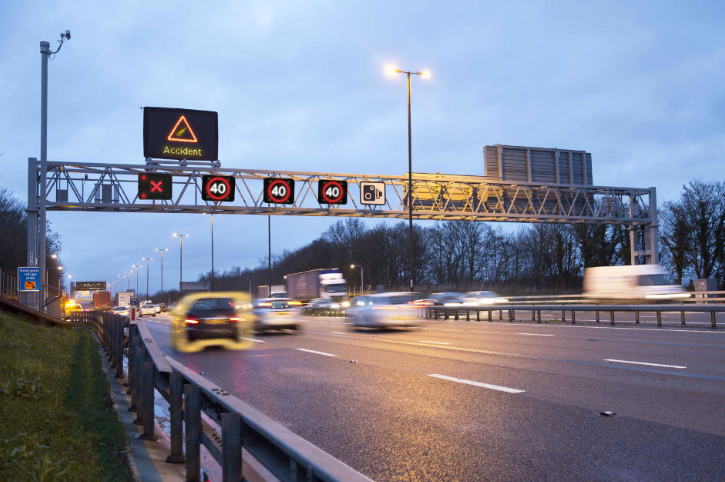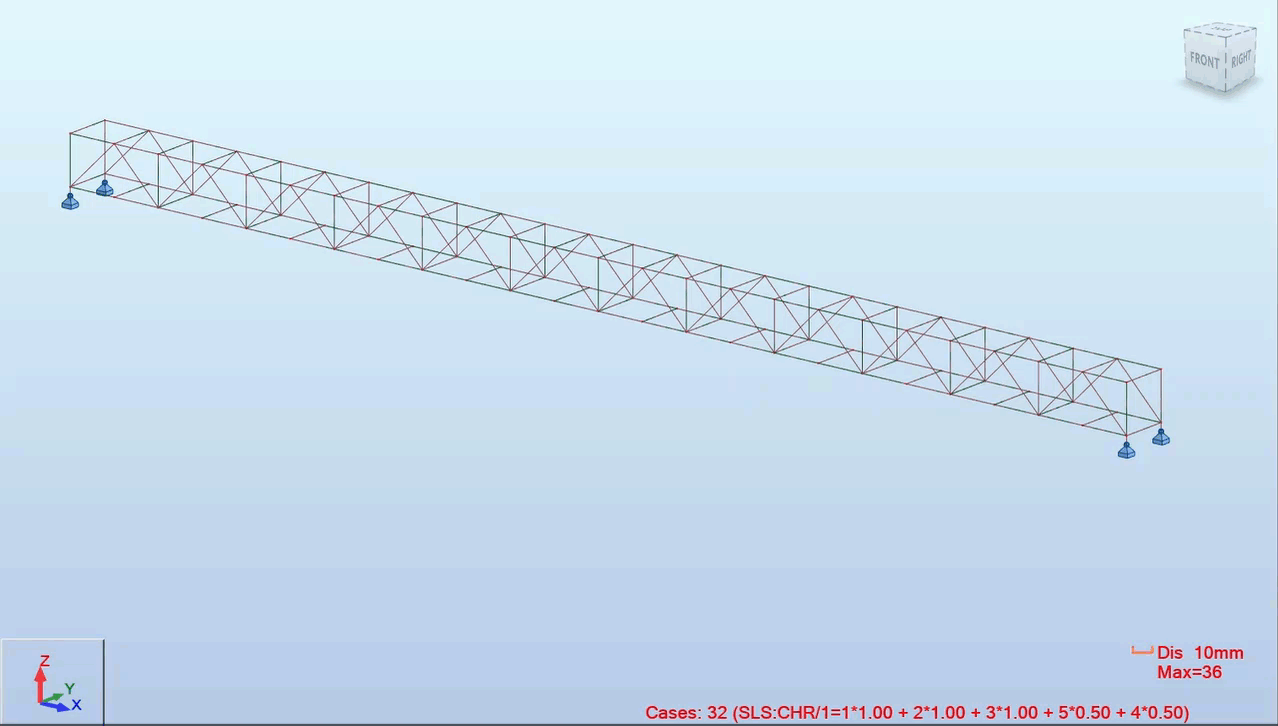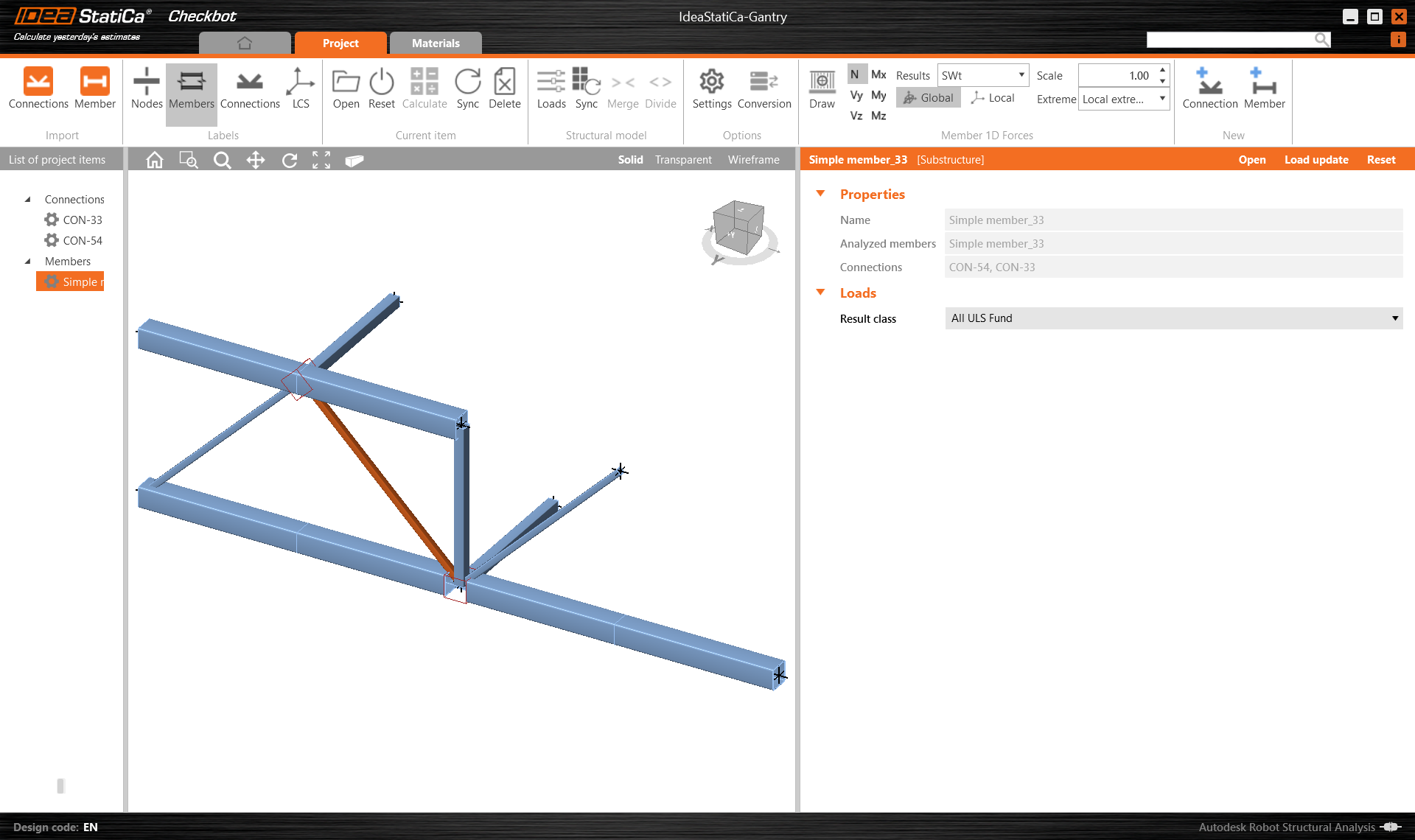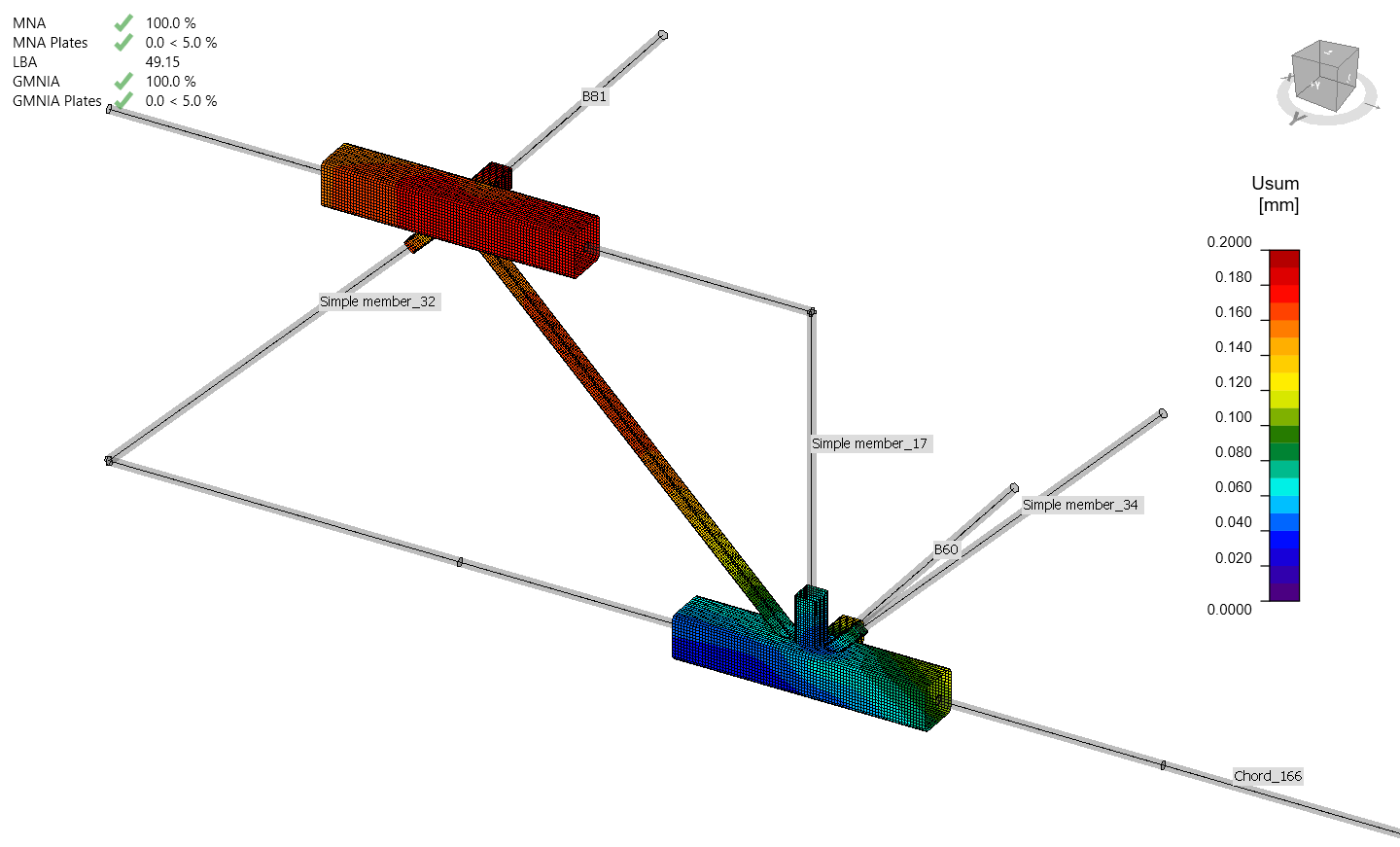Truss Members and IDEA StatiCa
Background and murmurings
Welcome to my sixth blog post! As has become the tradition, I like to bring a personal touch to the table. How many of us can remember when we analyzed our first truss? For me, I was 18 years old and in my second year of sixth form studying for A Levels. The subject was Engineering Drawing and the method was Bow's Notation.
How many (older) engineers remember that? Fast forward a few years, and a truss was the first structural system I made at university – admittedly, with three other team members. This was cut, drilled, bolted and tested to destruction – which didn’t take too long, I hasten to add!
Trusses obviously come in many shapes and sizes and are made from so many different materials it is hard to count – remember drinking straw structures? The common denominator though has always been the joints – not only how they should be treated, but also how they should be designed. For their size, they offer exceptional load-carrying capabilities, which is one of the reasons they are a 'go-to' solution for tricky situations!
I have always had a love of timber – quite possibly because I am a keen historical building and construction nerd. Timber was the first structural material used to form trusses. Timber trusses date back to 2500 BC. The Ancient Greeks used them in their roofs and they featured heavily in Medieval architecture.
Many of the old tithe barns were built using these methods. The joints were formed within the timber members using traditional mortice and tenon with timber pegs or similar. The tools the craftsman of the past had access to were somewhat limited, which resulted in 3D works of art rather than just something just to keep the wind and rain out.
Timber trusses have always been utilized in housing from medieval manor houses to modern-day dwellings. What has changed dramatically are the methods and forms used. Today’s modern roof trusses with their slender members and engineered connection plates are a far cry from the picture above.
When looking at the evolution of steel trusses, one first has to look at iron, both cast and wrought, and its role. The sector largely responsible for this development is transportation – think of the railways (all over the world).
There are many fine examples dotted around the globe:
Brunel’s Lenticular Truss – Royal Albert Bridge - Iron
The Firth of Forth Rail Bridge - Steel
With bridges leading the way in clever and elegant design, who was going to step up to the mark from a building perspective? In 1889, the ‘Iron Lady’ was built in Paris (also known as The Eiffel Tower). Although built from wrought iron, it is, perhaps, one of the most iconic buildings to feature trusses and truss action in the world today.
Of course, modern structures rely on trusses more and more to get over special circumstances or clear spans. There are several types of trusses, some with special names:
- bowstring truss
- fan truss
- fink truss
- gambrel truss
- howe truss
- king post truss
- queen post truss
- Vierendeel girder (a form of truss)
- Warren truss
- etc.
Structural analysis, design methods and materials have changed but the one constant regarding difficult connection design remains. Being able to assess the correct load requirements on a truss (and any structure for that matter) is paramount. So many trusses have their roots in geometry, so it is important that geometry is also recognized as an important, sometimes architectural, factor.
What about IDEA StatiCa?
The members themselves (in a steel truss) are often slender and are subsequently subjected to additional effects that might lead a designer to consider higher forms of analysis. Having a software solution that can combine all of these requirements with easy-to-use functionality is absolutely essential in today’s structural engineering world.
Thankfully, there is IDEA StatiCa. IDEA StatiCa Connection can design today's complicated truss connections safely and efficiently – there are also advanced timber-based connections (using plates). It can use the analytical model from several FEA solutions using an application called IDEA StatiCa Checkbot. Checkbot provides the link between FEA and IDEA StatiCa Connection. If the designer is worried about the members within the truss, then we have IDEA StatiCa Member. IDEA StatiCa Checkbot can be used to drive this solution as well.
Where does IDEA StatiCa fit in? Consider a simple, but essential, example:
These are possibly the most underrated structures on our road networks today. They are subjected to all the usual load types: dead, live, wind, snow, and ice. Then there are the dynamic loads to possibly consider as well. All in trying to design something that can be fabricated efficiently and erected quickly.
This example has been simplified as we wish to focus on the interaction with the IDEA StatiCa solution.
Step 1 – Finite Element Analysis
The structure was modeled, analyzed, and designed in a suitable finite element analysis (FEA) application – in this case Autodesk Robot Structural Analysis. Please see our website for a full list of supported applications.
The IDEA StatiCa Checkbot add-in was started from inside Robot. The installation of most of these so-called add-ins to the other supported applications is done automatically to make their use even quicker and easier.
Step 2 – Export to Checkbot
Members and the connections are selected in Robot and exported to Checkbot. Should changes occur, then the Checkbot model can also be synchronized with FEA. The external loads entered in the FEA model are used for the global analysis and the internal reactions – axial forces, shears and moments – are transferred to Checkbot. Once in Checkbot, they are available to both Connection and Member.
In Checkbot, you can also visualize the load effects.
Members in IDEA StatiCa Checkbot can also be merged – so continuous members made from smaller lengths can be merged together for a connection design. In this example, the bottom chord members have been modified in this way. Conversely, the top chord has not because at its connection there is no need. This is great when using FEA applications that have to model continuous members in this way.
Step 3 – Design and check the connections
Connections can be designed and checked with IDEA StatiCa Connection and members can be checked in IDEA StatiCa Member. Member positioning has always been a compromise between analysis and actuality. Members can move in fabrication to make them easier to weld – this can often lead to problems within the analytical model. In IDEA StatiCa, we can modify eccentricities to allow for this mismatch.
It is within the Connection solution that you must remember to match the analysis model when looking at the Model Type. If you are looking to utilize single bolt connections in a traditional gusset plate, then you must remember to change the Model Type accordingly – to N,Vy,Vx – one that does not allow moments. However, if your connection (as it is in this example) can take a moment, then this step can be avoided.
Working with the actual design load combinations is imperative to achieve a safe and efficient connection model and code-check. Using four simple operations to create a fully welded joint, we can see that all of the critical load effects (our design combinations) have been checked in turn and all pass.
Step 4 – Check members
The second connection can be designed in a similar manner before looking at the brace in IDEA StatiCa Member.
What this shows, however, is that there is plenty of scopes to look into further material and connection efficiencies as many truss members are over-designed to compensate for this lack of advanced analysis.
Closing thoughts
Trusses are an essential part of Structural Engineering and their use is only going to get more and more adventurous. Advances in materials and methods of construction will mean that new designs and concepts will emerge over the coming years – I am sure of it. What I do see with the approach of IDEA StatiCa to be a data store is the best of both worlds: we can let experts in the FEA field carry on and develop world-class solutions whilst we link to their results and model to create the connection models and member checks – a field that we are best in class in!
I hope you have enjoyed this foray into the world of trusses and how we at IDEA StatiCa can help you in several ways. Look out for a related article coming soon on braces.










